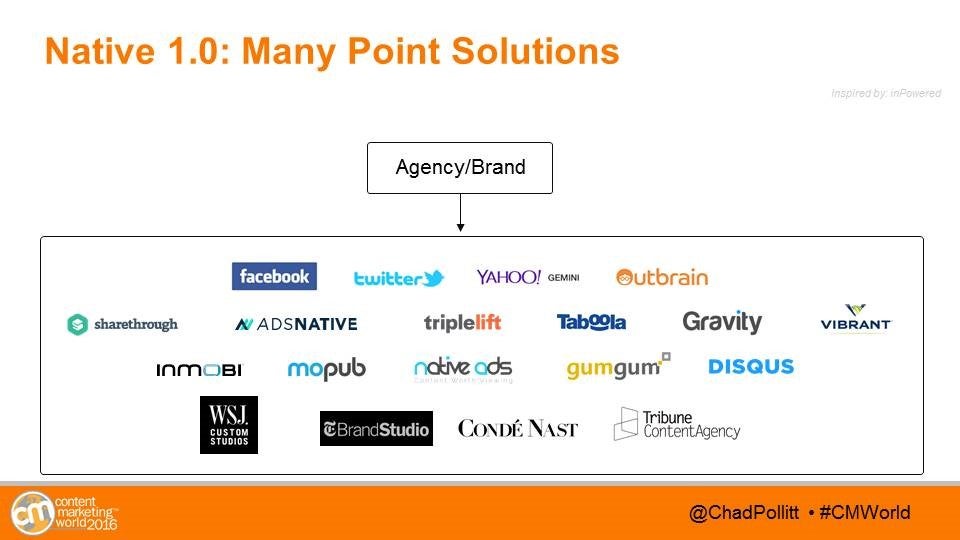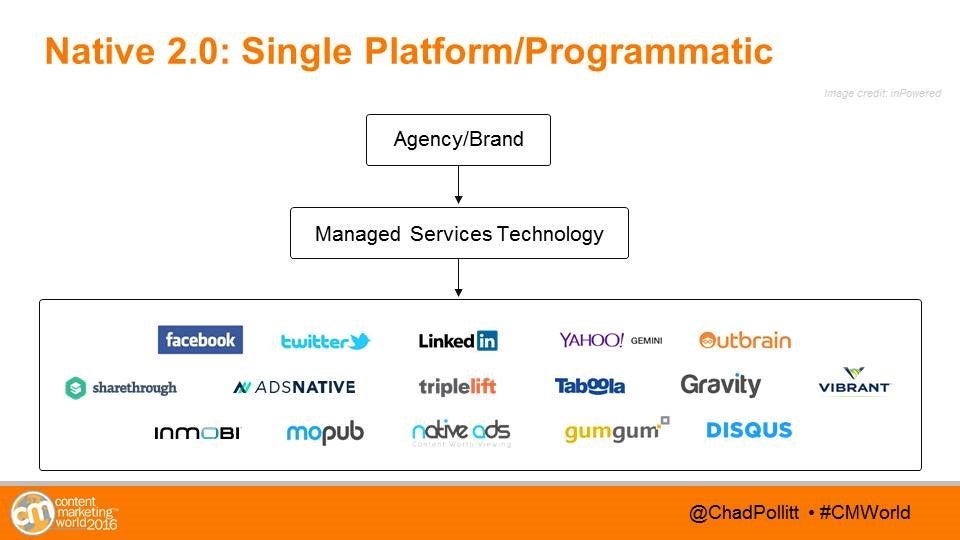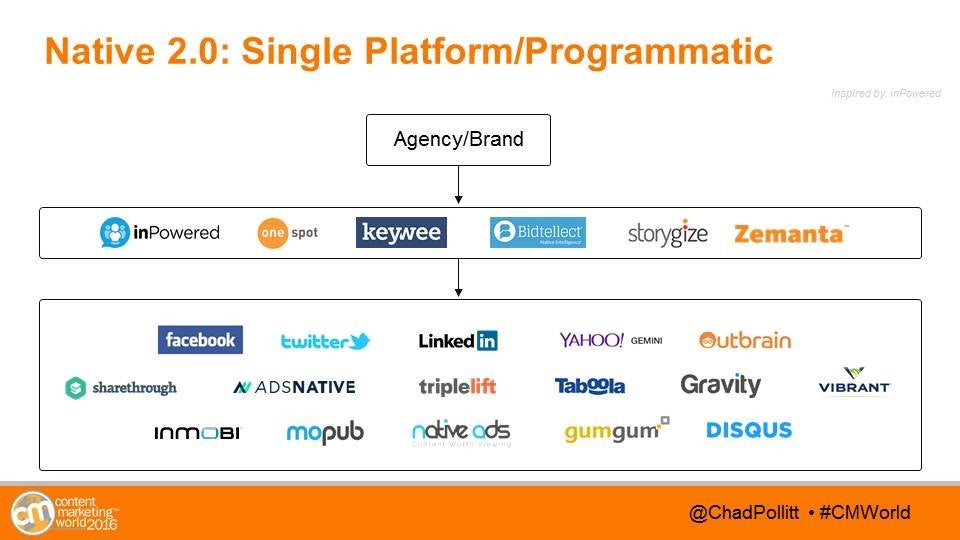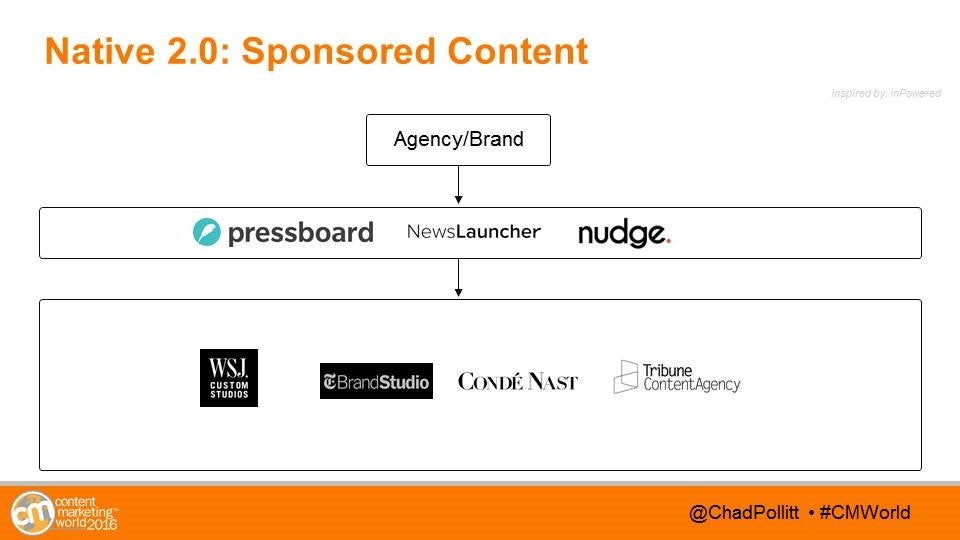
Many marketers exploring native advertising for the first time are going directly to networks like Taboola, Adblade, Outbrain and Revcontent, and/or they’re going directly to publishers for sponsored content.
This is what Peyman Nilforoush, CEO and Co-founder of inPowered, calls “Native 1.0.” While the networks mentioned above do provide a level of scalability, marketers are still beholden to the size of the network. Also, scaling sponsored content on publications is nearly impossible if a marketer is working directly with the publishers’ content studio. Lastly, analytics across networks and publishers may not be reported the same. This makes comparing different networks and publications difficult.
I’ve taken Peyman’s concept and broadened it to include sponsored content for my Content Marketing World presentation, “Paid and Unpaid Content Promotion and Distribution that Actually Work,” coming up in September. If you haven’t registered yet you can do so here. Make sure you use our discount code: RELEVANCE200. By the way, we’re not an affiliate and receive no commission for registrations. Consider this article a sneak peek.
In the Native 1.0 model, marketers are forced to work with many point solutions if they want to truly scale native advertising. This can be challenging because each network represents a unique user interface and learning curve.
For sponsored content, each publication would have to be engaged with separately, too. This makes the channel nearly impossible to scale. Also, in this model measurement, analytics, optimization and tracking across point solutions can be challenging. Each one could measure things differently than the others, making comparisons between them a very inexact science.
However, there’s a layer of managed services technology out now that can help alleviate this problem with scale and measurement on native. This is what Peyman calls “Native 2.0,” and it’s represented in the image below.
The managed services technology enables marketers to tap into many networks at the same time and through one user interface. These solutions provide incredible scale for marketers in their efforts to distribute their content.
Some companies represented in the managed services technology box are shown below. Each brand represented connects with their own unique mix of networks, offers unique and varying value propositions, and different levels of service. However, each one connects to multiple networks using one user interface.
It’s these technologies that make bidding, campaign optimization and measurement across multiple networks turnkey. Imagine the manual effort required to do this trying to work directly with 20 different networks.
Another advantage of using a managed service technology is the learning curve. Each one has account success managers whose job it is to make campaigns successful. That’s a far cry from going it alone on many individual point solutions.
There’s also an ecosystem of managed service technology for sponsored content as shown below.
All three of these solutions provide analytics and tracking. This makes it easy to compare campaigns across multiple publications. However, Pressboard and NewsLauncher also serve as a virtual “matchmaker.”
These technologies allow for marketers to pitch sponsored content to many publishers at once. So rather than picking up the phone and calling 20 different publishers, marketers only need to use one of these managed services technologies.
It is true that an added layer of managed services technology adds another expense to the budget. However, that expense is more than made up in time savings and incremental ROI over time. These solutions allow marketers to focus on what they do best – marketing – rather than spending countless hours learning how to set up campaigns in 20 different networks. The scale that they provide for content marketers seeking distribution is unprecedented. This is the technology that will usher native advertising to the forefront of digital paid media.
















